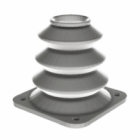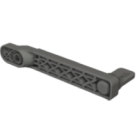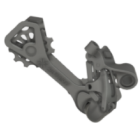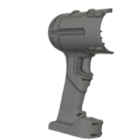How to make a 3D model for printing?
Before you can print anything in 3D, you need a well-constructed 3D model. Whether you’re designing a mechanical part, a custom enclosure, or a decorative piece, the modeling stage is where the success of your final print is determined. Understanding how to model for 3D printing means thinking beyond just geometry — you need to consider wall thickness, overhangs, tolerances, and slicing behavior from the start.
Let’s walk through the essential elements of making a 3D model for printing, from the tools you can use to the principles you need to follow.
Where to make 3D models for 3D printing
The first step is selecting a 3D modeling tool that suits your experience level and project type. For simple geometric parts, beginner-friendly options like Tinkercad or SketchUp are ideal. For functional parts, parametric CAD tools like Fusion 360, FreeCAD, or SolidWorks offer greater precision. For artistic or organic shapes, sculpting tools like Blender or ZBrush are preferred.
Most of these programs can export in STL or 3MF formats — both compatible with slicing software. When deciding where to make 3D models for 3D printing, consider your learning curve, the design intent, and compatibility with your printer’s ecosystem.
How to design your own 3D print models?
Designing for 3D printing isn’t just about making something look good — it’s about making it printable. Here are key guidelines to follow when creating your own models:
- wall thickness – avoid walls that are too thin for your printer’s resolution or material strength,
- watertight geometry – model should be manifold — meaning there are no gaps, flipped faces, or intersecting geometry,
- overhangs and bridges – be mindful of features that require support; design with 45° angles where possible.
- Tolerances – if parts must fit together, leave clearance based on your printer’s precision. For FDM, 0.2 – 0.5 mm is a good rule of thumb,
- Orientation – think about how the model will sit on the build plate. Flat bases and minimal overhangs reduce the need for supports.
By integrating these ideas early, you’ll minimize print failures and reduce time spent on revisions.
You’ll find a more detailed breakdown of print-specific design guidelines — including overhang angles, bridging, and support-friendly geometry — in a dedicated chapter in this guide: Design for 3D printing.
Create a 3D model for printing
Once your design is complete, the next step is exporting it in the correct format. Most slicing software requires an STL, OBJ, or 3MF file. Before exporting, run a geometry check (many programs have built-in validation tools) to ensure your model is error-free.
At this point, you’ve gone from idea to creating a 3D model for printing. You’re ready to slice the file and begin the physical build — but the quality of your print still depends on how well you followed design-for-printing principles in your model.
Explore also
- What is the 3D printing process?
- 3D printing process step by step
- What is 3D slicing in printing? Key to print quality and success
- Understanding 3D print settings for better results
- The additive manufacturing process: how 3D printing builds layer by layer
- Printing 3D
- What is post-processing?
- Why do 3D prints fail?
Related categories













